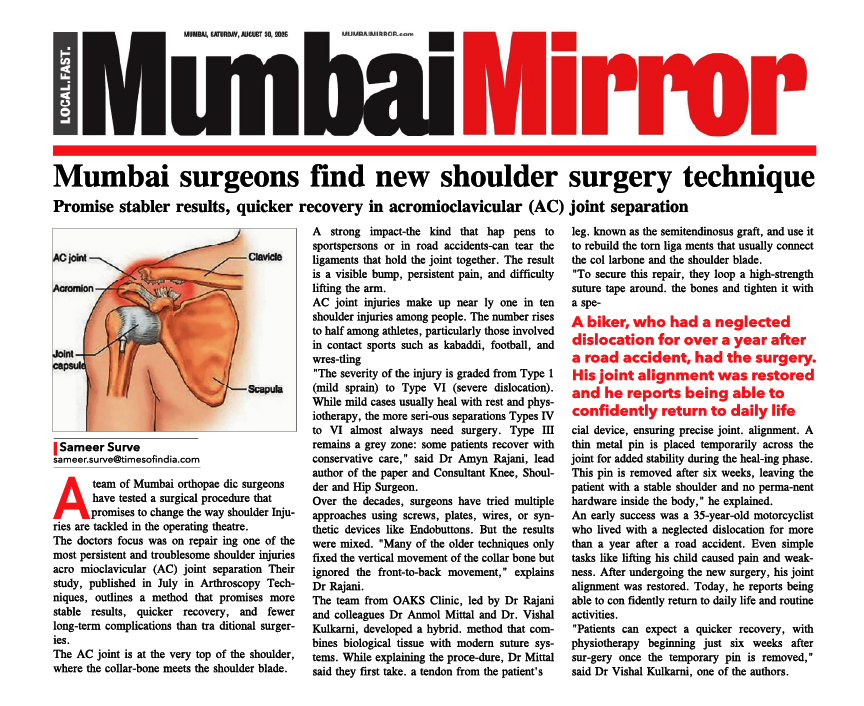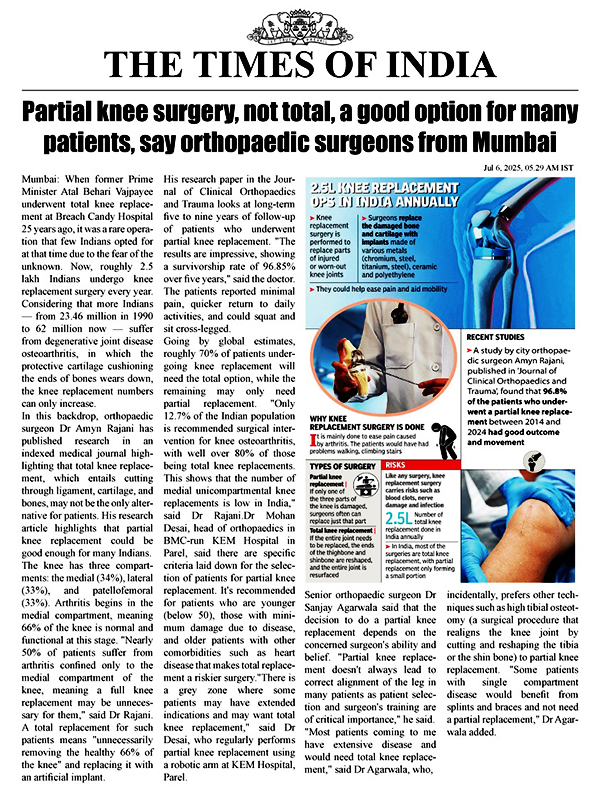Rotator Cuff Injury
In anatomy, the Rotator Cuff (sometimes incorrectly called a "Rotator Cup", "Rotor Cuff", or Rotary Cup) is a group of muscles with tendons that act to stabilize the Shoulder. The four muscles of the Rotator Cuff are over half of the seven scapulohumeral muscles.
The Rotator Cuff Muscles are important in Shoulder movements and in maintaining Glenohumeral Joint (Shoulder Joint) stability. These muscles arise from the Scapula and connect to the head of the Humerus, forming a cuff at the Shoulder Joint. They hold the head of the Humerus in the small and shallow glenoid fossa of the Scapula. The Glenohumeral Joint has been analogously described as a golf ball (head of the Humerus) sitting on a golf tee (Glenoid Fossa).
During abduction of the arm, moving it outward and away from the trunk, the Rotator Cuff compresses the Glenohumeral Joint, a term known as concavity compression, in order to allow the large deltoid muscle to further elevate the arm. In other words, without the Rotator Cuff, the humeral head would ride up partially out of the glenoid fossa, lessening the efficiency of the deltoid muscle. The anterior and posterior directions of the glenoid fossa are more susceptible to shear force perturbations as the glenoid fossa is not as deep relative to the superior and inferior directions. The Rotator Cuff’s contribution to concavity compression and stability varies according to their stiffness and the direction of the force they apply upon the joint.
Despite stabilizing the Glenohumeral Joint and controlling humeral head translation, the Rotator Cuff Muscles also perform multiple functions, including abduction, internal rotation, and external rotation of the Shoulder. The infraspinatus and subscapularis have significant roles in scapular plane Shoulder Abduction (scaption), generating forces that are two to three times greater than the force produced by the supraspinatus muscle. However, the supraspinatus is more effective for general Shoulder Abduction because of its moment arm. The anterior portion of the supraspinatus tendon is submitted to significantly greater load and stress, and performs its main functional role.
|
Muscle
|
Origin on Scapula
|
Attachment on Humerus
|
Innervation
|
Function
|
|---|---|---|---|---|
|
Supraspinatus
|
Supraspinous fossa
|
Superior and middle facet of the greater tuberosity
|
Abducts the arm
|
Suprascapular nerve (C5)
|
|
Infraspinatus
|
Infraspinous fossa
|
Posterior facet of the greater tuberosity
|
Externally rotates the arm
|
Suprascapular nerve (C5-C6)
|
|
Teres minor muscle
|
Middle half of lateral border
|
Inferior facet of the greater tuberosity
|
Externally rotates the arm
|
Axillary nerve (C5)
|
|
Subscapularis
|
Subscapular fossa
|
Lesser tuberosity (60%) or humeral neck (40%)
|
Internally rotates the Humerus
|
Upper and Lower Subscapular nerve (C5-C6)
|
The Supraspinatus muscle fans out in a horizontal band to insert on the superior and middle facets of the greater tubercle. The greater tubercle projects as the most lateral structure of the humeral head. Medial to this, in turn, is the lesser tuberosity of the humeral head. The Subscapularis muscle origin is divided from the remainder of the Rotator Cuff origins as it is deep to the Scapula.


